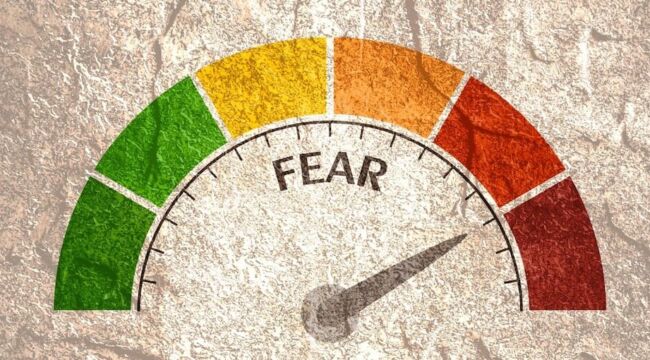Ferris Bueller’s “Crisis Bubble”
Markets move pretty fast. If you don’t stop and look around once in a while, you could miss ‘em.
Ferris Bueller wasn’t a trader (forgive me for adapting the iconic movie quote). But if Ferris ever had the urge to dip his toes into the markets, he’d probably have the perfect mindset to deal with this noisy, volatile news cycle.
For the past two weeks, we’ve watched the same situation play out. Here’s how it goes:
A weekend news story breaks, riling up the financial media and speculators. Futures fall out of bed Sunday evening as panicked traders rush to sell. We’re then inundated with endless “expert” opinions on how the urgent situation will play out in the months ahead. Bears start gloating as the market sinks. Total chaos ensues.
But after a good night’s rest, investors greet Monday morning and decide that maybe the world isn’t coming to an end. They begin to feel as if they overreacted — and a few of them dip their toes in the market. More buyers show up. And a few days later, the most important news event of the week has almost completely fizzled, while the stock market recovers.
Just look at how these past two weekends have unfolded…
A Tale of Two Panics
Last week, the DeepSeek artificial intelligence news rattled the markets.
Nervous tech investors started selling on Sunday evening. By Monday morning, the DeepSeek situation sparked a mini-panic that ripped through the entire tech space. The Nasdaq Composite gapped down nearly 3.5% to kick off the new trading week, while NVDA steadily dropped all morning, losing 17% by the closing bell.
Investors jettisoned their mega-cap tech shares, crypto, and AI-adjacent stocks. And while NVDA and the chips remained stuck in the mud all week, the rest of the market held its own. Even the Nasdaq Composite clawed back some of its losses from earlier in the week. We also witnessed some constructive rotation into other non-tech areas of the market. Disaster averted.
This week, Trump’s tariff threats are the new stock market boogeyman.
The script is almost identical to the DeepSeek panic from just one week earlier. Futures pitched a fit Sunday night following a weekend of tumultuous political action, culminating in Trump slapping 25% tariffs on Mexico and Canada, along with 10% tariffs on China.
Cue the Sunday night panic! Nasdaq futures dropped more than 2%. The S&P wasn’t too far behind, with a drop of 1.75%. Oil rallied more than 2%. The US Dollar index spiked above 109 as the Euro and Canadian dollar tanked.
This time around, the dive in futures spread to the crypto market. That’s where the real selling started. No, I don’t think the Trump team levied any tariffs on alt coins. But that didn’t stop speculators from pounding their sell buttons, sending most of the crypto space deep into the red. Ethereum was down 20% at one point late Sunday, along with additional devastation across the alt-coin space. Meanwhile, Bitcoin slipped into the low $90K range for the first time since mid-January.
Like the DeepSeek situation, more important information revealed itself the next day. Just as traders started to panic, Mexico agreed to terms Monday morning. Then, stocks (and crypto!) began to recover.
As soon as the media was ready with their mid-day tariff updates, the averages were already well on their way toward repairing much of the Sunday night damage. Yes, stocks were still (mostly) lower on the day. But the major averages all finished well off their early morning lows, with the Dow leading the way with a minor 0.3% drop — hardly the crisis many folks were predicting on Sunday night.
Bitcoin also attracted eager buyers on its sharp dip. It managed to jump more than 11% off its lows by early Monday evening, retaking the $100K level. Disaster averted — again!
How to Beat the Hysteria
We still have plenty of time to see how the tariff shocks unfold this week.
But the pattern is clear…
The market is moving incredibly fast. With the help of the financial media, we’re bouncing from narrative to narrative. And stocks are going everywhere and nowhere at the same time.
Our feeds are inundated with endless hot takes explaining what the tariffs will mean for the economy and how they could affect the markets. Investors are posting detailed DeepSeek breakdowns to figure out just how big a threat it might be to US companies. Everyone’s an expert — and they’re all looking for a reason to sell.
But you’re fooling yourself if you think the headlines du jour are going to dictate trading for the rest of the month, quarter, or year. In fact, it’s probably safe to assume that the details will change before the middle of the week. What mattered Sunday night might not matter by the closing bell today.
I know it’s difficult to look past the headlines and the noise blaring out of your television. But you have to break away from these distractions in order to survive these market conditions.
You have to ask yourself… What would Ferris do?
I’ll take a crack at this one.
For starters, I don’t think he would get sucked into the wave of panic selling hitting if off hours or early in the morning.
He’d probably opt to sneak away from his trading station, go on an adventure, and plan his attack while everyone else panics.
Be like Ferris! Do your best to protect your sanity and wait to see how prices react before making any major moves with your portfolio.
Here’s the question I always keep in mind as late-night or weekend news begins to affect futures: What if the people who are panicking are wrong?
If you assumed yes, you’ve managed to avoid two ugly mistakes that would have resulted in selling at or near short-term lows.
And if you assumed no? You were just another trader chasing headlines.</p



Comments: